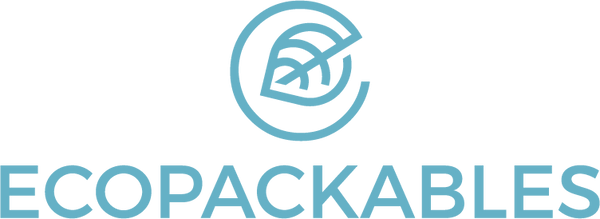When it comes to eco-friendly packaging, understanding the nuances of recycled materials is crucial. Here at EcoPackables, we're committed to providing sustainable packaging solutions, and one way we do that is by customizing blends of recycled content. In this article, we'll explore the distinction between post-consumer recycled (PCR) and post-industrial recycled (PIR) materials and why our typical blend is 60% PCR and 40% PIR.
Post-Consumer vs. Post-Industrial Recycled Materials
Let's begin with the key differences between these two types of recycled materials.
Quality Difference:
- Post-consumer recycled (PCR) materials are sourced from products that have been used and then discarded by consumers. Think of your empty plastic bottles, containers, or packaging.
- Post-industrial recycled (PIR), also known as pre-consumer recycled, originates from manufacturing processes. It's all about recycling excess or rejected materials before they even reach consumers.
Where They Come From:
- PCR materials are a direct result of consumer waste, playing a crucial role in the circular economy. They help reduce the demand for virgin materials.
- PIR materials, on the other hand, are generated within the manufacturing industry. They minimize waste and environmental impact during production.
Why Our 60/40 PCR/PIR Blend Works for You
At EcoPackables, we understand that different packaging applications have unique requirements. That's why we offer customized blends of PCR and PIR materials, allowing you to strike a perfect balance between quality, cost, and sustainability. Our typical blend of 60% PCR and 40% PIR offers the ideal compromise, ensuring your products remain durable while also promoting environmentally responsible practices.
Recycling Recycled Films at Drop-off Locations
You might be wondering about the concept of recycling already recycled materials. It's a valid question, and we're here to shed some light on it.
Material Degradation:
- Each recycling cycle tends to degrade material quality and structural integrity. Plastics, for example, can become more brittle and less suitable for high-performance applications over time.
Downcycling:
- Repeated recycling can result in downcycling, where materials are turned into lower-value products. For instance, a plastic bottle might become plastic lumber instead of being transformed into new bottles.
Contaminants:
- As materials go through multiple recycling processes, they can accumulate contaminants that affect the final product's quality. Removing these contaminants completely can be quite challenging.
The Limits of Mechanical Recycling:
- Mechanical recycling, the most common method, has inherent limitations when it comes to restoring materials to their original quality. But, it's important to note that there are innovative recycling technologies like chemical or advanced recycling that can help overcome some of these limitations.
Recycled content is an essential aspect of sustainable packaging, and knowing the difference between post-consumer and post-industrial recycled materials is vital for making informed choices. At EcoPackables, we offer you the best of both worlds with our customizable PCR and PIR blends. While recycling recycled materials is important, it's equally crucial to be aware of the limitations due to material degradation, downcycling, contaminants, and the constraints of mechanical recycling. As we all strive for a more sustainable future, exploring advanced recycling technologies will play a pivotal role in extending the life of recycled materials and reducing our environmental impact. We're here to guide you in making eco-friendly choices for your packaging needs.

